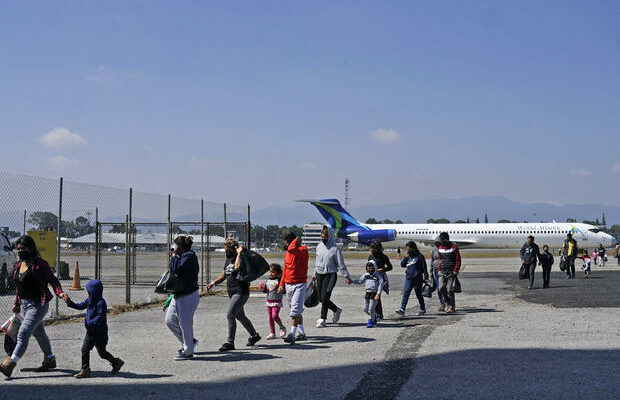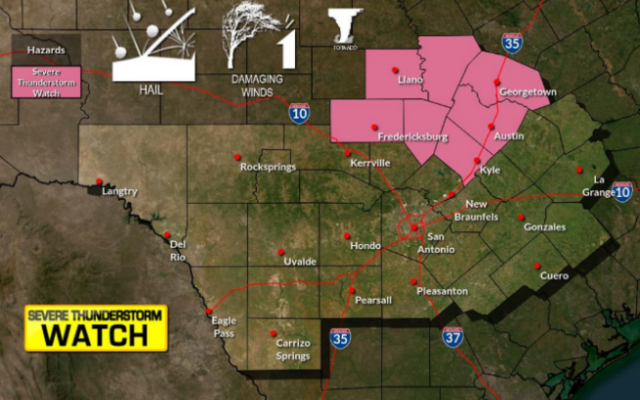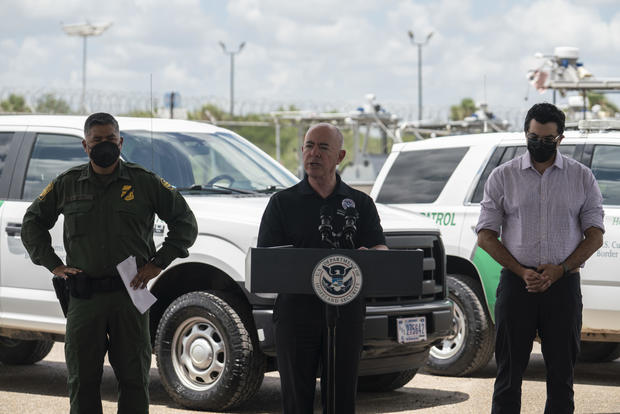At 1 year mark, Biden’s immigration record frustrates allies and opponents

Republicans, who have accused Mr. Biden of encouraging unlawful migration through changes in policy and rhetoric, portrayed the administration as too lenient, criticizing the release of some migrants who were allowed to stay in the U.S. to have court hearings before an immigration judge.
While many were released into the U.S., others met a starkly different fate. Using a pandemic order enacted by former President Donald Trump, the Biden administration launched an unprecedented deportation blitz to Haiti, expelling thousands, including women and children, in just a few weeks.
In its first year, Mr. Biden’s administration made dozens of high-profile and little-noticed changes to the U.S. immigration system, many of them reversals of Trump-era restrictions. But the Biden administration also continued some policies instituted by Mr. Trump.
A task force created by Mr. Biden has reunited 118 migrant children with families who were separated near the southern border during the Trump administration. But following Republican criticism, the Biden administration also ended court negotiations over financial compensation for these families.
In an interview, Homeland Security Secretary Alejandro Mayorkas said the administration’s priorities in 2022 include reforming immigration detention, reducing massive immigration application backlogs, reshaping the asylum process and expanding naturalization efforts for eligible permanent residents.
“We accomplished a lot in this past year. We certainly have plans to do a lot more — and we will do it,” Mayorkas, a child of Cuban refugees, told CBS News on Wednesday.
2021 saw both unusual and predictable developments in immigration policy. Last summer, following the Afghan government’s sudden collapse, the Biden administration quickly staged the evacuation and resettlement of tens of thousands of at-risk Afghans, a vast operation that continues to this day.
Meanwhile, a long-shot bid by the White House and slim Democratic majorities in Congress to offer legal protections to many of the country’s estimated 11 million unauthorized immigrants crumbled after three separate plans to bypass the Senate’s 60-vote threshold were rejected by the chamber’s parliamentarian.
Arrivals of migrants at the U.S.-Mexico border last year defied historic patterns, rising to unprecedented levels in the hot summer months. Migrant apprehensions climbed to 1.7 million, a record, in fiscal year 2021, but they also reflected an unusually high rate of adults attempting to cross the border multiple times.
A year in, the Biden administration’s border strategy has divided the president’s appointees and frustrated critics on the right and left, who hurl accusations of lax immigration enforcement and outrage over the continuation of some Trump-era restrictions.
Pili Tobar, the White House deputy communications director, said Republicans’ criticism is rooted in “politics of fear,” indicating the administration wants to highlight the “progress” Mr. Biden has made on immigration policy.
“We don’t think that this is the third rail of politics, or that this is an area to shy away from,” Tobar said. “On the contrary, we think the American people want this to be an issue that gets resolved.”
But the political blowback over the border has been so intense it has overshadowed key reforms and campaign promises that Mr. Biden fulfilled in other parts of the sprawling immigration system.
“According to our tracking, in its first year, the Biden administration took about 300 administrative actions on immigration,” said Jessica Bolter, an analyst for the Migration Policy Institute. “This probably will be surprising to a lot of people because of how much the border dominated public discourse around Biden’s first year.”
At the border, despite chaos and some changes, Trump-era expulsions continued
The main U.S. border policy during Mr. Biden’s presidency has been an emergency rule put in place in March 2020 by the Trump administration. Known as Title 42, it allows U.S. border agents to quickly expel migrants to Mexico or their home country without screening them for asylum.
Despite criticism from advocates, the Biden administration has defended the expulsions in federal court, arguing they are needed to curb the spread of the coronavirus inside detention sites.
Officials have enforced Title 42 longer under Mr. Biden than under the Trump administration, carrying out over 1 million expulsions, most of them of single adult migrants, in 11 months, government figures show. Under Mr. Trump, roughly 400,000 expulsions were carried out.
The Biden administration has, however, refrained from expelling migrant children who enter U.S. custody without their parents. Instead, unaccompanied children from Central America are being transferred to government shelters.
The administration has also applied Title 42 to a smaller percentage of families than the Trump administration, partly because Mexican officials have refused to accept Central American families with young children. However, the number of families encountered in 2021 increased by 1,200% from 2020.
There have been notable border policy changes under Mr. Biden. The State Department voided agreements that would have allowed the U.S. to re-route migrants seeking refuge to Central America, and the Justice Department reversed Trump-era rules that disqualified victims of gang and domestic violence from asylum.
Hours after taking office, Mr. Biden stopped border wall construction, though some barrier gaps are now being closed. The Justice Department also set up a program to expedite the immigration court cases of families who are not expelled under Title 42.
Texas emerged as chief legal adversary
During Mr. Biden’s first week in office, Republican officials in Texas sued his administration over the decision to halt most interior deportations for 100 days. The lawsuit, which blocked the deportation moratorium four days after it started, foreshadowed Texas’ emergence as Mr. Biden’s chief legal adversary.
Since then, Texas has filed multiple lawsuits seeking to hinder Mr. Biden’s immigration agenda. The state has already convinced a federal judge to rule against limits on interior immigration arrests and through another case is seeking to force Mr. Biden to expand Title 42 to once again include unaccompanied minors.
In July 2021, granting a request by Texas, a federal judge ordered the Biden administration to stop processing first-time applications for the Deferred Action for Childhood Arrivals program, which provides work permits and deportation protections to unauthorized immigrants brought to the U.S. as minors.
A month later, Texas and Missouri convinced another judge to mandate the revival of a Trump administration policy that requires asylum-seekers to await their U.S. court hearings in Mexico, a program that Mr. Biden had suspended after calling it inhumane.
The Remain in Mexico rule was restarted in December; though its implementation has been limited so far.
The administration moved to reform ICE
With less fanfare, the Biden administration has reshaped the work of Immigration and Customs Enforcement (ICE), the agency in charge of deportations and immigration arrests, scrapping Trump-era rules that broadened the population subject to deportation and expanded immigration detention.
Current rules direct ICE agents to arrest migrants who recently entered the U.S. illegally, noncitizens convicted of serious crimes and those who threaten national security. They generally exempt undocumented immigrants who have lived in the U.S. for years from arrest if they have clean records.
“We have fundamentally changed immigration enforcement in the interior. For the first time ever, our policy explicitly states that a non-citizen’s unlawful presence in the United States will not, by itself, be a basis for the initiation of an enforcement action,” Mayorkas said. “This is a profound shift away from the prior administration’s indiscriminate enforcement.”
The Biden administration has barred, in most circumstances, the detention of pregnant or nursing women and victims of serious crimes. It also ended mass ICE arrests at worksites and expanded the number of “sensitive locations” where agents should avoid making arrests to include bus stops and shelters.
The long-term detention of migrant families with children — which the Trump administration sought to expand to deter illegal border crossings — has also been discontinued, for now.
In May, ICE stopped using two detention facilities plagued by allegations of abuse and initiated a review of its detention system. Mayorkas on Wednesday said additional detention centers will be closed. ICE, however, has yet to fulfill Mr. Biden’s campaign pledge to end for-profit immigration detention.
“I don’t want to get into the substance of a policy memorandum that I’ve not yet issued,” Mayorkas said. “I will only say the following: number one, detention reform is a priority of mine, and two, the president fulfills his promises.”
Trump limits on legal immigration were rolled back
Mr. Biden has also rolled back several limits the Trump administration placed on legal immigration, from categorical bans to bureaucratic processing restrictions.
For the current fiscal year, Mr. Biden set an ambitious target of resettling up to 125,000 refugees fleeing war and violence, a dramatic reversal of the historic low refugee cap of 15,000 that Mr. Trump set before leaving office.
The admissions target will likely not be met, however, given the state of the refugee resettlement infrastructure, which is still recovering from the pandemic and cuts under Mr. Trump, and currently focused on helping the Afghan evacuees who were relocated to the U.S. last summer.
Mr. Biden’s administration has offered Temporary Protected Status, a humanitarian protection from deportation, to more than 400,000 immigrants already in the U.S., including Haitians and Venezuleans who fled political and economic crises in their home countries.
The State Department resurrected and expanded the Obama-era Central American Minors initiative, which allows some parents in the U.S. to bring their children from Guatemala, Honduras and El Salvador to the country legally.
Early in his presidency, Mr. Biden revoked a Trump order that restricted immigration and travel from 13 countries, most of them African or predominantly Muslim. He also refused to extend restrictions on work and immigrant visas that Mr. Trump put in place during the first year of the COVID-19 pandemic.
The Biden administration also stopped enforcing Trump administration regulations that gave U.S. officials broader discretion to reject green card and visa applications from low-income immigrants deemed to be a “public charge,” or an economic burden on the country.
In 2022, immigration challenges may only intensify
In many ways, Mr. Biden will continue to face immigration policy challenges in 2022 that have bedeviled Republican and Democratic presidents for decades.
Massive case backlogs continue to plague U.S. Citizenship and Immigration Services and the immigration court system, crippling the government’s ability to adjudicate applications in a timely manner.
There’s currently no viable path to fulfill Mr. Biden’s pledge to legalize the country’s undocumented immigrants. Any such proposal would face insurmountable odds if Republicans regain control of the House in November’s elections. Inaction in Congress could prompt Mr. Biden to take executive action, but that would likely invite additional lawsuits from conservative states like Texas.
While migrant arrivals at the southern border have recently plateaued, they could increase sharply later this year, as historical trends suggest, creating a new humanitarian and political challenge for Mr. Biden.
There are, however, some opportunities for Mr. Biden to implement his immigration policy vision in 2022. The Afghan evacuee resettlement effort, which has enjoyed bipartisan support, could serve as a model to reinvigorate the U.S. refugee program, test private refugee sponsorship and increase admissions.
While some Biden appointees fear the rescission of the Title 42 border rule may trigger a migration wave, its eventual end could allow the administration to test initiatives it has proposed, including a plan to let asylum officers review migrants’ requests for protection, instead of transferring cases to backlog-ridden courts.
The main objective of the proposal is to dramatically speed up the screening of asylum-seekers. In an ideal scenario, it would allow the U.S. to quickly determine whether migrants should be deported because they don’t qualify for asylum or allowed to stay because they are fleeing persecution or torture.
But the administration still needs to finalize the rule and hire hundreds of asylum officers to implement it. Biden officials support setting up campus-like centers to screen migrants, but none have yet been erected. And while Title 42 is supposed to be a temporary emergency order, there’s no telling when it will be lifted.
On Wednesday, Mayorkas said he expects to start the asylum overhaul plan “in very short order.”
You Might Also Like




